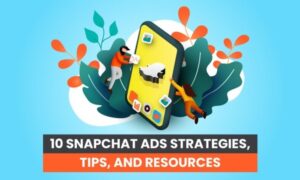In the fast-paced digital landscape of 2023, having a strong online presence is crucial for B2B companies to drive traffic, generate leads, and stay competitive. SEO is pivotal in achieving these goals. This blog post (and its accompanying comprehensive guide) aims to provide B2B marketers, SEO specialists, and business owners with the knowledge and tools necessary to create a successful B2B SEO strategy in 2023. From understanding the latest trends and challenges to implementing effective keyword research, on-page optimization, backlink building, result analysis, and staying up-to-date with SEO trends, let’s discuss what actually “moves the needle” in B2B SEO.
Understand the B2B SEO landscape in 2023
The SEO landscape is constantly evolving, driven by updates to search engine algorithms, changes in user behavior, and the increasing influence of voice search and AI. To create an effective B2B SEO strategy, staying informed about the latest trends is essential. Some key trends in 2023 include:
Mobile-first indexing
With the majority of internet users accessing websites through mobile devices, search engines like Google prioritize mobile-friendly websites in their rankings. This was rolled out years ago, but it is the case across all industries. The B2B industry usually does have a slightly larger audience that views content and websites on desktops (due to the target audience usually being at work when they are researching companies or vendors). However, many still do check their email, conduct research, and view websites on their phones and tablets just as often.
Voice search optimization
As voice search is still widely used with smart devices and now some vehicles (such as Toyota’s new operating system for their lineup, which allows drivers and passengers to look up questions, businesses, and other information from their vehicle’s infotainment system), B2B companies need to optimize their content for voice queries. This involves incorporating natural language, long-tail keywords, and structured data markup to increase visibility in voice search results.
AI in search and marketing
ChatGPT has blossomed in popularity over the last year, reaching a new record for the fastest-growing user base in February 2023, according to Reuters. It now has over 1.16 billion users, according to DemandSage. OpenAI, the owners of ChatGPT, are said to be rolling out a business/enterprise level for organizations who want to make ChatGPT’s offerings available to employees via an encrypted platform (so they can share proprietary information that remains secure), and Microsoft plans to use its technology to let enterprise organizations “create their own” ChatGPT so information stays secure.
Additionally, Google announced at Google I/O in May 2023 that it plans on adding more AI experiences in user’s search journey on Google. This is likely the biggest development with search engine results pages (SERP) changes we’ve seen in a while.
User experience and core web vitals
Search engines increasingly focus on user experience metrics, such as page load speed, mobile responsiveness, and interactivity. Optimizing these factors improves both search rankings and user satisfaction. In 2023 and beyond, a user is much more likely to exit out of a slow page load experience within seconds, figuring they will just find the information they need elsewhere.
Continuous Google algorithm updates
Luckily for those in the SEO industry, Google has started announcing some of their bigger algorithm changes and updates, including when they are going to be taking place. To stay updated with Google changes, be sure to bookmark our Google Algorithm Update History page.
SEO, no matter the industry, is always evolving, so it’s important to regularly read SEO publications (like the Moz Blog), learn from subject matter experts in the space, and continue to stay on top of updates so your strategy can pivot accordingly
Conduct keyword research
Keyword research forms the foundation of a successful B2B SEO strategy. It involves identifying the keywords and phrases potential customers use to find products or services in your industry. To conduct effective B2B keyword research in 2023, consider the following steps:
Understand your target audience
Develop buyer personas and identify their pain points, needs, and search intent. This insight helps you choose keywords that align with your audience’s interests. It’s important to pay attention to the “curse of knowledge” and don’t assume your audience has the same level of knowledge about your product that you do. Just because you know how your products work (or that they even exist) doesn’t mean that your audience does. This is a unique opportunity for SEOs to identify the operating knowledge of their target audience so they can best produce content that answers their search queries.
Utilize keyword research tools
Tools like Moz Keyword Explorer provide valuable data on search volume, keyword difficulty, and related keywords. Leverage these tools to identify high-potential keywords. It’s also important to look at your own data in Google Search Console or Google Analytics 4 (GA4). Today’s keyword research is becoming more and more accurate when compared to search engines, and these are all invaluable tools forSEO and keyword-related research.
Focus on long-tail keywords
Long-tail keywords are longer and more specific search queries that tend to have lower competition. Targeting these keywords can help you reach niche audiences and generate high-quality leads. Most B2B product offerings serve a niche purpose, so try to go after keywords that explain the problem or solution of your product or service instead of its name.
For instance, if your company was an “iPaaS” (integration platform as a service), going after keywords around integration, data architecture, and application integration would likely get more traction than repeatedly building content around the term “iPaaS”.
In order to complete effective keyword research, you have to know where to start. Better target audience identification, high-quality tools, and a focus on keywords that users are actually searching for (which are usually problem- or solution-oriented) can help B2B SEOs get the right phrases they need to bring in more users and potential leads.
Optimize on-page content
On-page optimization involves making your website and its pages search engine-friendly. Here are some best practices to optimize your on-page content:
Meta title tags
Craft compelling, concise, and keyword-rich title tags and meta to briefly describe your page’s content and entice users to click within 70 characters. The advice on whether or not to include your business name in a meta title tag still isn’t concrete, but if you have the character space, include it at the end after a pipe: |.
Meta descriptions
It’s best practice to write compelling meta descriptions, because that first paragraph on your page not only tells the reader what your content is about, search engines also pull it into the search snippet in a SERP. It is known that Google frequently rewrites meta descriptions, but it’s still worthwhile to spend about 180 characters describing the page so search engines, and search engine users have a good idea of what it’s about.
Header tags
Use header tags (H1, H2, H3, etc.) to structure your content logically and improve readability. Include relevant keywords in your headers to signal the topic of each section. This can also serve as a table of contents if your blog article formatting allows it, improving readability for longer pieces of content (usually over 2000 words). Header tags also get pulled into the SERP and can be used in SERP features such as the ‘People Also Ask’ feature, if they are used in a question-answer format.
Image optimization
Optimize images by compressing their file sizes (for a better page load experience), using descriptive file names, and adding alt text that includes relevant keywords. This helps search engines understand and index your visual content. It also helps make images more accessible to users with visual impairments.
Site architecture
Good site architecture is essential for SEO success because it helps search engines and users find your website pages easier. By doing this, effective site architecture improves user experience, facilitates efficient crawling and indexing by search engines, distributes page authority effectively, and contributes to website speed and performance.
Meta titles and descriptions, headers, and site architecture may seem like SEO 101, but they are still valuable cornerstones to properly optimized content that is going to get indexed faster by search engines and have a longer time on-site for users. Google has preached time and time again about always doing what’s best for users and making sure content is fast, findable, and easy to read checks all the boxes.
Build quality backlinks
Backlinks remain a critical factor in B2B SEO, as they signal the credibility and authority of your website. However, it is essential to focus on quality rather than quantity. Consider the following strategies for building quality backlinks:
Create link-worthy content
Produce high-quality, informative content that provides value to your target audience. This increases the likelihood of other websites linking to your content as a valuable resource. Consider running your own research studies for new industry data that others will want to share, or create infographics, white papers, and other guides.
Split content into separate areas (when it makes sense)
This strategy won’t work for everyone, but if you are at a large organization, it might make sense from a site architecture standpoint to separate different types of content.
For example, Moz has the SEO Learning Center and Blog, and the strategy (and the types of content we produce for each) varies. Many large corporations also have a press mentions section, as well as a media/PR blog, where they release company announcements or press releases.
This helps news outlets and other organizations parse and subscribe to whatever type of content section they’d like. You can see Moz’s “News & Press” page for an example of this type of content area.
When it’s easier for news outlets and others to find your company announcements, they are much more likely to find and link to them more quickly and easily. It’s all about getting users the information they need quickly.
Partnerships
If your executive leadership team agrees to it, working with other organizations that cater to your same target audience but aren’t competitors can be a great way to get more exposure (and traffic) to your brand. Partnerships can entail sending a dedicated email about the other brand to your email list (and they do the same), or collaborating on a promotion through other marketing channels (such as blog posts, white papers, or videos) to get more leads and engagement.
Many organizations still buy backlinks, but in my experience, this is a risky and low ROI strategy. Companies that offer this can’t promise backlinks from high-quality places, and the ones that do may be using nefarious tactics (such as not fully disclosing links in the content they are sharing with the other website to get a link). It’s usually best to think of link building as an inbound strategy, rather than outbound.
Partnerships can be fruitful, but it takes it a lot of planning to make them reputable and pay off for both sides of the deal.
The end game: Optimization to drive results
From on-page optimization to working on your backlink strategy, SEO is truly a sum of its parts: it’s only as good as each component. To see where you’re making the most headway, all of the above efforts need to be tracked properly with accurate revenue attribution so you can see where SEO is moving the needle for your B2B organization. To learn more about measuring and analyzing results, visit the measuring success chapter in Moz’s ‘Beginner’s Guide to SEO’ and learn more about measuring organic search traffic quality from Adriana Stein.
Once you have a good understanding of where SEO is making the most impact, you can choose what to prioritize in upcoming quarters and long-term future planning. This can help your B2B SEO efforts compound over time, as most parts of SEO utilize one another to work more effectively. For example, a better site architecture and experience will likely lead to more users linking to your content. Make sure you have a well-rounded program to ensure better results over time.


